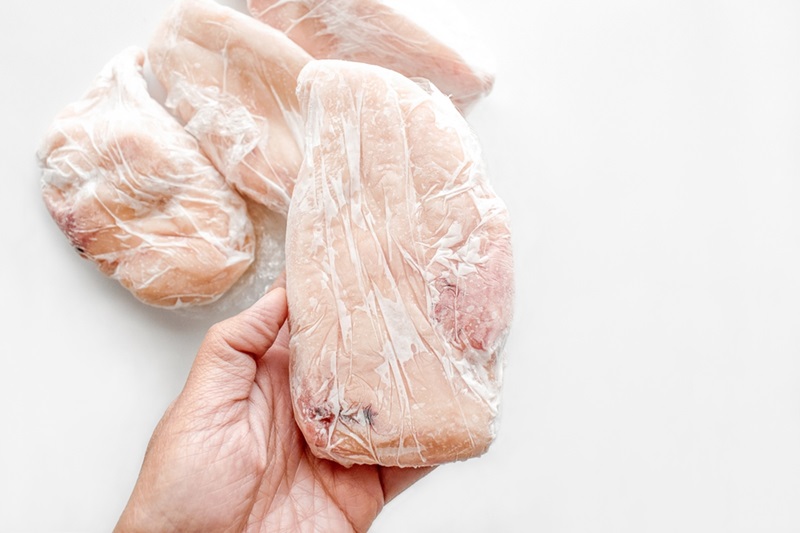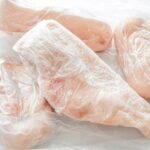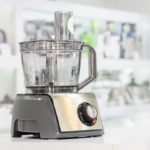When excess frost and ice accumulate inside your freezer, it’s time to defrost it. Defrosting a freezer is important to extend the lifespan of the appliance.
Regular defrosting also ensures consistent temperatures, reduces the risk of freezer burn, and provides a cleaner environment.
However, all the frozen food stored inside your freezer must be stored correctly during the defrosting process, or it may have to be discarded.
If you’re not sure what to do with food when defrosting the freezer, don’t worry. Here, we give you three potential places to keep frozen food and a step-by-step guide to defrosting your freezer without losing food.
Where Do You Put Frozen Food When Defrosting the Freezer?
When defrosting the freezer, you ideally want to put any frozen food, especially perishables, in another freezer.
It’s important that the food is kept at temperatures below 0°C, and a freezer is the most effective way to ensure it’s held at these low temperatures.
Fortunately, if you don’t have a spare freezer (or a helpful neighbour willing to lend you theirs), there are some alternative options you can use:
Option 1: Use ice packs & cool boxes
You can use ice packs and cool boxes to help keep the temperature down. Pack all of the frozen food tightly into a cool box and put ice packs around the edge.
Keep the cool box in a cool place in your home, away from direct sunlight, radiators, and other heat sources.
When done correctly, cool boxes can be effective for up to 48 hours. However, this depends on the quality of the cool box, the ambient temperature in your home, and whether you’ve used the best practices.
The more tightly you pack the frozen food together, the longer it will stay frozen at temperatures below 0°C.
Option 2: Outside in cold weather
If you live in a country with cold winter climates, you can leave your frozen food outside while defrosting your freezer.
This is a perfect option if you can’t find a cool box large enough to fit the contents of your freezer. Wait until there are a few days of icy weather forecast (highs of around 5°C maximum), and put your food in the garden away from direct sunlight.
If using this method, it’s vital to wrap frozen foods securely. Not only does wrapping foods together help them stay frozen, but it also prevents animals and pests from getting inside your food. Packing the food tightly into large plastic boxes should work well.
Option 3: In your fridge
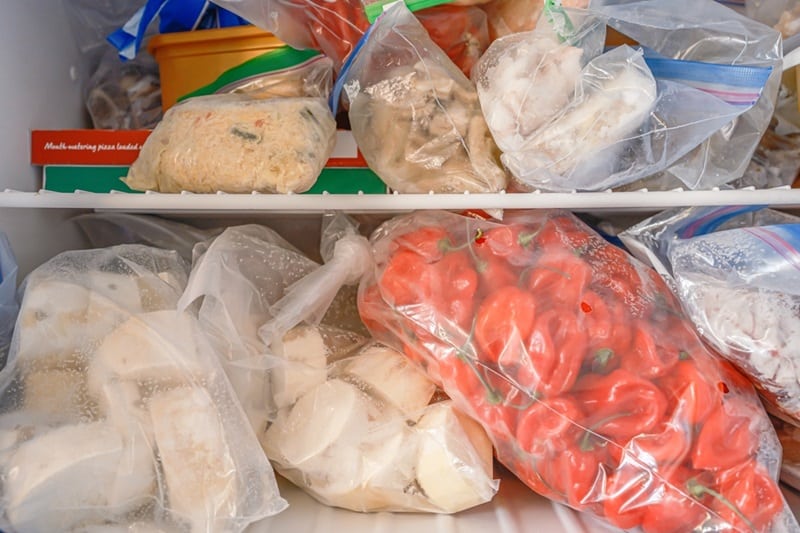
Although not cold enough to keep the food frozen, your refrigerator should have a temperature of 5°C or less.
This delays the defrosting process and helps to keep the food fresh. However, you must be aware of the time limit and keep frozen food in the fridge for the shortest amount of time possible.
As long as the food has only thawed slightly, you can return it to your freezer once it’s plugged back in.
However, if the food has defrosted completely, it is crucial not to refreeze it. This doesn’t mean throwing it away immediately, though—you can keep frozen food in the fridge for up to two days, after which it must either be eaten or discarded.
How Do You Defrost a Freezer Without Losing Food?
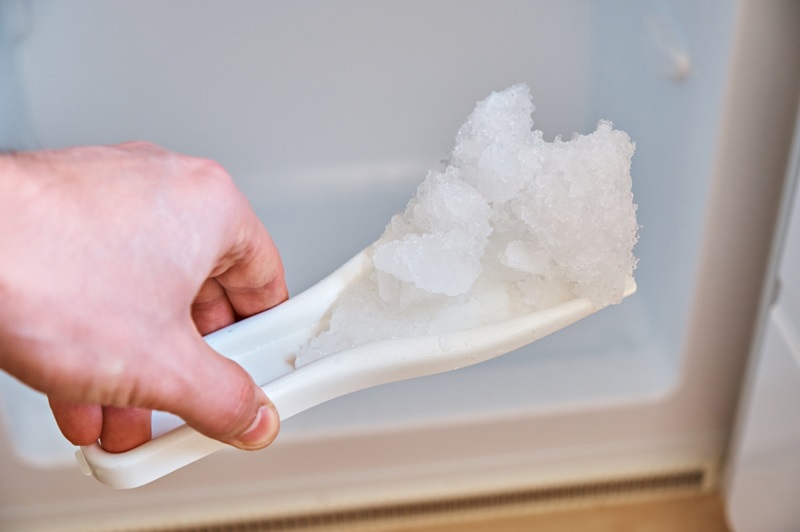
The only way to defrost a freezer without losing food is to keep the food frozen until it can be returned to your freezer drawers. It is vital to handle the food properly to prevent spoilage.
Use one of the above methods to keep your frozen food as cold as possible and defrost your freezer as quickly as you can.
Afterwards, refreeze what you can and eat any food that is completely defrosted within two days. Anything left will unfortunately need to be discarded.
Here is a closer look and a step-by-step guide to the process so that you can defrost your freezer without losing food:
Step 1: Plan ahead
When defrosting a freezer, time is of the essence! The longer your food is out of the freezer, the less likely it will be safe to eat by the time you’ve finished.
Therefore, schedule the defrosting process when you have enough time to complete it without delays. On the countdown to the scheduled date, try and eat as much food from your freezer as possible.
You’ll also want to plan ahead and get any equipment you’ll need to store the food. Ask neighbours if you can use their freezer for a few days or purchase a cool box if you don’t have one already.
You’ll also want to buy and freeze ice packs if you’ll be using them to temporarily store perishable items.
Step 2: Empty the freezer
Remove all food items from the freezer drawers and shelves and begin to sort. Check the expiration dates of frozen items and throw away any past their expiry. You should also discard any items that show signs of freezer burn, ice crystals, or an off smell.
All remaining freezer items can be stored in a second freezer or kept cold using cool boxes, cold outside temperatures, or your fridge.
Group similar items together for easier organisation. You’ll also want to group all perishable items together—this includes frozen meat, poultry, fish, dairy products, and cooker leftovers like mince that cannot be refrozen.
Step 3: Store food safely
If you have a second freezer or are using a neighbours, go ahead and put all freezer items that you’re keeping in the freezer.
Assuming that you don’t, store your frozen food like so:
- Use a cooler for perishables: Place as many items as you can inside a cooler with ice packs to keep them at a safe temperature. If you have many frozen items, prioritise putting perishable items in the cooler or use multiple cool boxes. Pack the frozen items tightly together to help them maintain their temperature better.
- Store items in the fridge: Items that can tolerate a brief thawing can be placed in your refrigerator. Keep in mind that the fridge will not keep food as cold as the freezer, so this is only suitable for a short period. Consider putting frozen items that you plan to eat over the next few days in your fridge to reduce spoilage.
Step 4: Allow the freezer to defrost
Once the freezer is empty, turn it off at the wall socket and let it thaw. All the ice in your freezer will melt, so ensure you have somewhere for the water.
For example, lay a large plastic liner down underneath the appliance and put old towels inside the freezer to absorb much of the liquid.
You can leave the freeze to thaw naturally. However, to avoid losing food, try to help speed up the defrosting process.
Consider using a plastic scraper to remove chunks of ice as it melts. Alternatively, boil a kettle and place pots of boiling water on the freezer shelves with the lids off. The steam will help to soften the surrounding ice more quickly.
Step 5: Clean the freezer
As the ice melts, clean the interior of your freezer with a suitable cleaning solution and a sponge or old rag.
We recommend either using a mild washing-up liquid mixed with warm water or a cleaning paste made from bicarbonate of soda and water.
Clean the freezer drawers, shelves, racks, and rubber seal to remove any built-up ice, frost, or debris.
Once you’ve cleaned the interior and all the ice has completely melted, dry the interior using clean towels.
Make sure the freezer is completely dry before plugging it into the mains and turning it back on to avoid ice buildup.
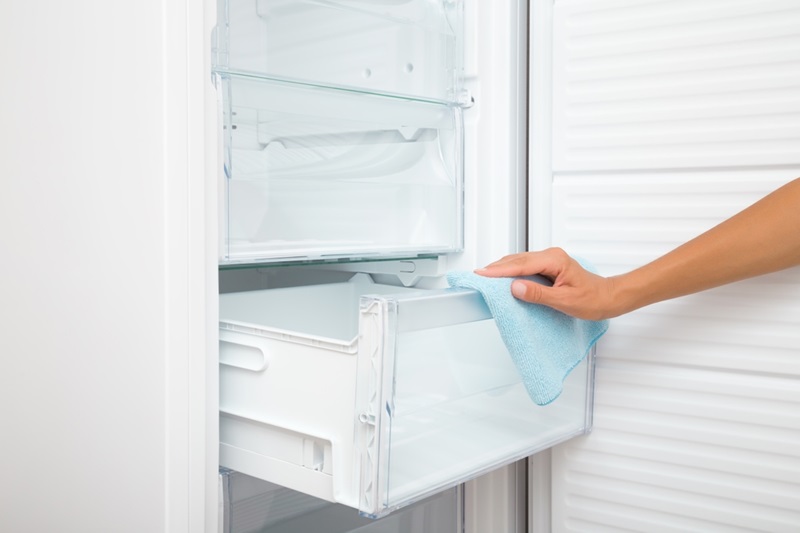
Step 6: Return food to the freezer
Once the freezer is clean and dry, wait until the freezer gets to a temperature of around -18ºC before returning food.
Large freezers can take several hours to reach and maintain a steadily cold temperature, over which time any food inside will start to spoil.
When putting the food back in your freezer, check each item individually to ensure it hasn’t completely defrosted.
If the food has thawed but still contains ice crystals or is at a temperature of below 5°C, it is generally safe to refreeze. If not, eat the food within a few days or throw it away.
Organise the freezer items efficiently, and consider labelling and dating them for future reference.

Hannah is a freelance content writer and self-proclaimed foodie. When Hannah isn’t sitting tapping at her laptop, you’ll probably find her in the kitchen. As an ex-chalet host, she’s used to cooking four-course meals for 10+ people and loves feeding friends and family whenever possible.

